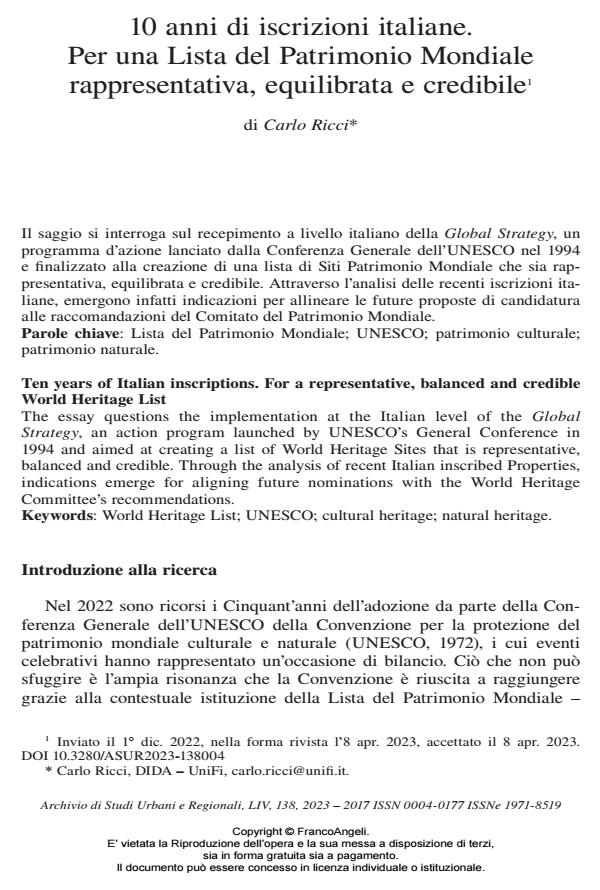Ten years of Italian inscriptions. For a representative, balanced and credible World Heritage List
Journal title ARCHIVIO DI STUDI URBANI E REGIONALI
Author/s Carlo Ricci
Publishing Year 2024 Issue 2023/138
Language Italian Pages 23 P. 66-88 File size 164 KB
DOI 10.3280/ASUR2023-138004
DOI is like a bar code for intellectual property: to have more infomation
click here
Below, you can see the article first page
If you want to buy this article in PDF format, you can do it, following the instructions to buy download credits

FrancoAngeli is member of Publishers International Linking Association, Inc (PILA), a not-for-profit association which run the CrossRef service enabling links to and from online scholarly content.
The essay questions the implementation at the Italian level of the Global Strategy, an action program launched by UNESCO’s General Conference in 1994 and aimed at creating a list of World Heritage Sites that is representative, balanced and credible. Through the analysis of recent Italian inscribed Properties, indications emerge for aligning future nominations with the World Heritage Committee’s recommendations.
Keywords: World Heritage List; UNESCO; cultural heritage; natural heritage.
Carlo Ricci, 10 anni di iscrizioni italiane. Per una Lista del Patrimonio Mondiale rappresentativa, equilibrata e credibile in "ARCHIVIO DI STUDI URBANI E REGIONALI" 138/2023, pp 66-88, DOI: 10.3280/ASUR2023-138004